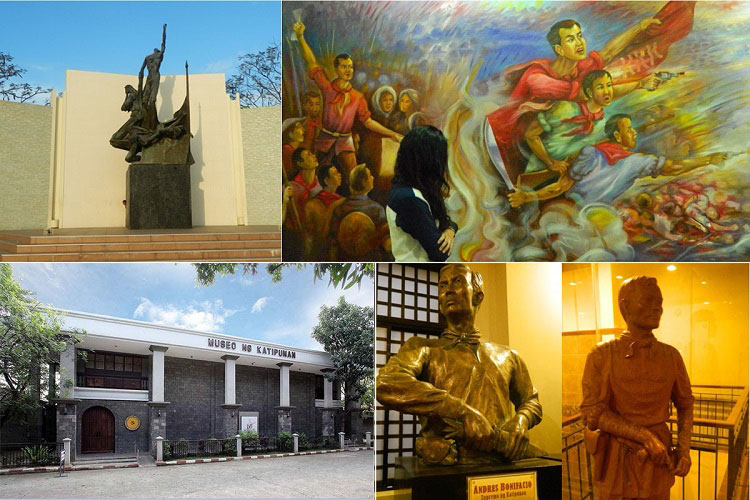
Every time people ask me where San Juan City, Metro Manila is, I usually answer them, “It is where Greenhills Shopping Center is.” They easily recognize it since it is one of the famous landmarks in the area. However San Juan City is not just about the shopping center. Less known to many that this city holds a lot of memories significant to the Filipinos. San Juan City has been a witness to numerous historical events.
Passing by the street of Pinaglabanan, you will find the Pinaglabanan Memorial Shrine and just within the shrine is the Museo ng Katipunan. The shrine and the museum have many interesting stories to share. If you have not been there, these are the things that will make you want to visit the place:
1. Sculptor Eduardo Castrillo’s “Spirit of Pinaglabanan”
Spirit of Pinaglabanan is a sculptural work which serves as a reminder of the 1896 Battle of Pinaglabanan. It is the first battle between the Spaniards and the Filipinos led by Gat Andres Bonifacio.
Also read: 12 Famous Monuments and Shrines in the Philippines that You should Visit
2. El Deposito de Aguas
During the Spanish Era, there were two (2) important government structures in San Juan City — El Polvorin or the ammunition depot and El Deposito de Aguas or the water reservoir. On August 30, 1896, these were the two (2) areas Gat Andres Bonifacio and the Katipuneros attacked. El Deposito de Aguas is located exactly where the shrine is today.
3. The Life of Andres Bonifacio
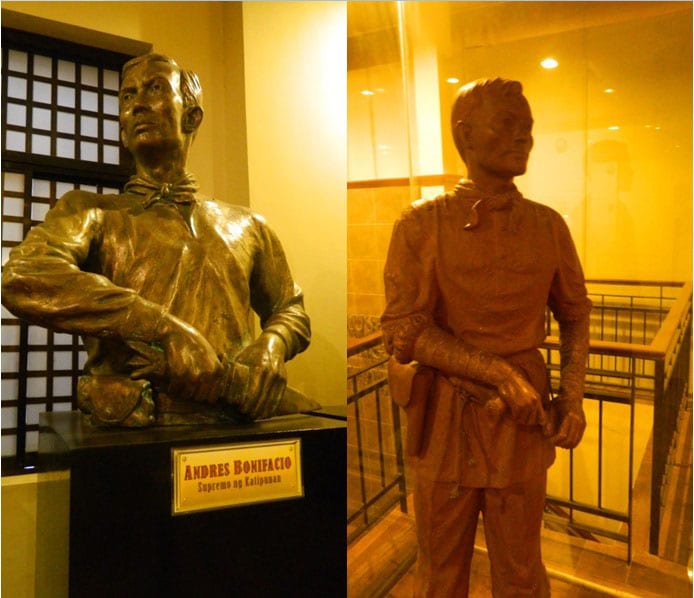
Lifesize bust of Andres Bonifacio by Filipina sculptor Julie Lluch (left photo); lifesize statue of Andres Bonifacio by Filipino sculptor Esmeraldo Dans (right photo)
This is the only museum in Metro Manila that details the life of Gat Andres Bonifacio. If you want to know more about the Supremo, Museo ng Katipunan is the perfect place to go to. You will know important information about Gat Andres which you cannot find in your textbooks.
4. The Katipuneros
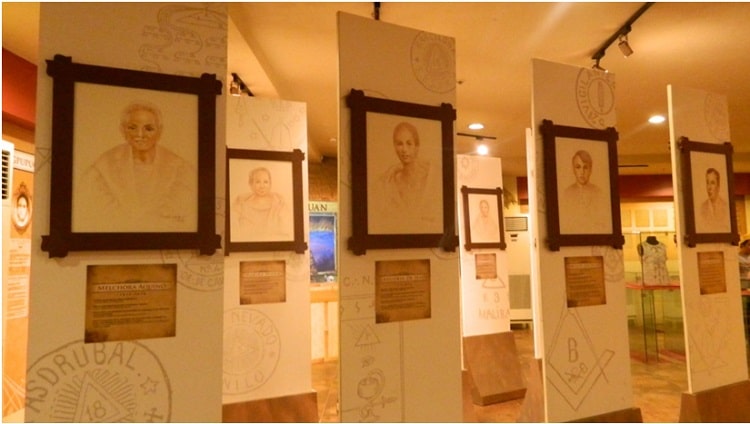
Monochrome portrait paintings of known Katipuneros by Filipino artist Pancho Piano
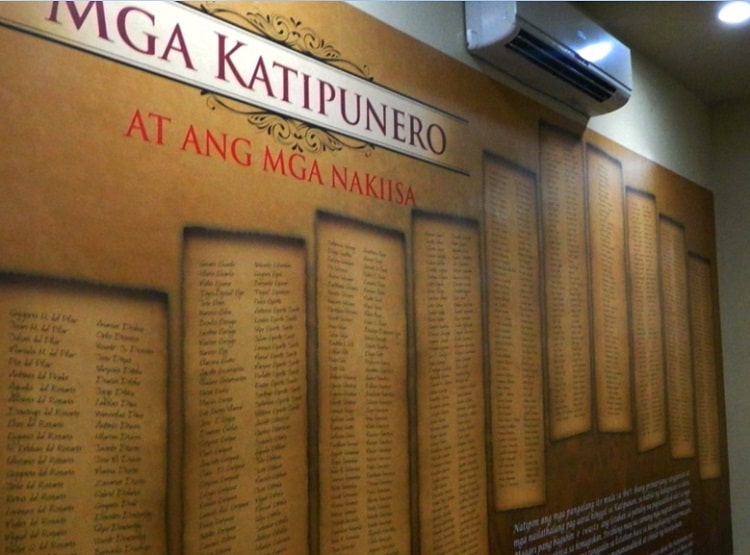
List of Katipunan members posted on the walls of the museum’s first floor
The Kataastaasan Kagalanggalang na Katipunan ng mga Anak ng Bayan (KKK) was composed of around 30, 000 Katipuneros. You can probably identify a few of the members of the “kilusan” but if you want to know the names of the thousand other Katipuneros, the museum has a list of them.
5. Katipunan Artifacts
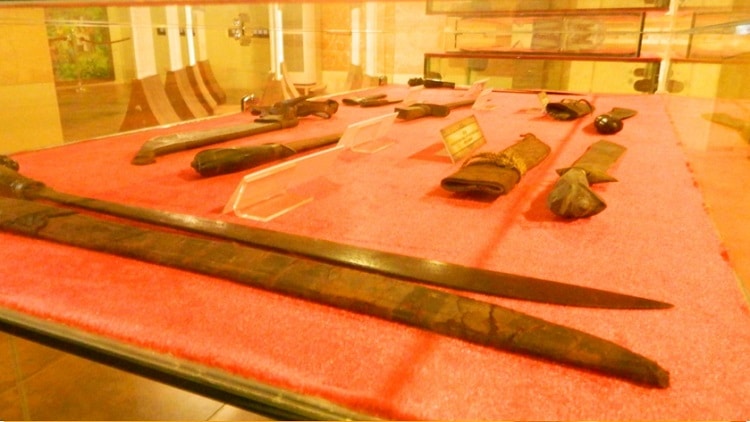
Weapons used by the Katipuneros during the 1896 Philippine revolution
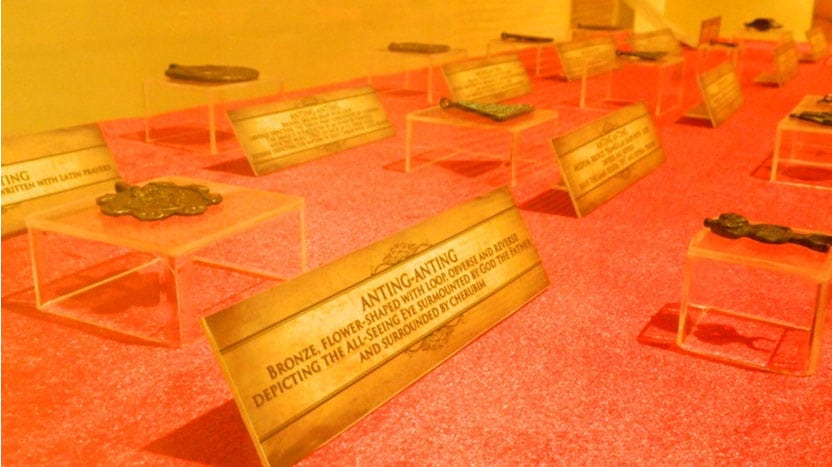
Variety of anting-anting/ amulets which were believed to have different magical uses
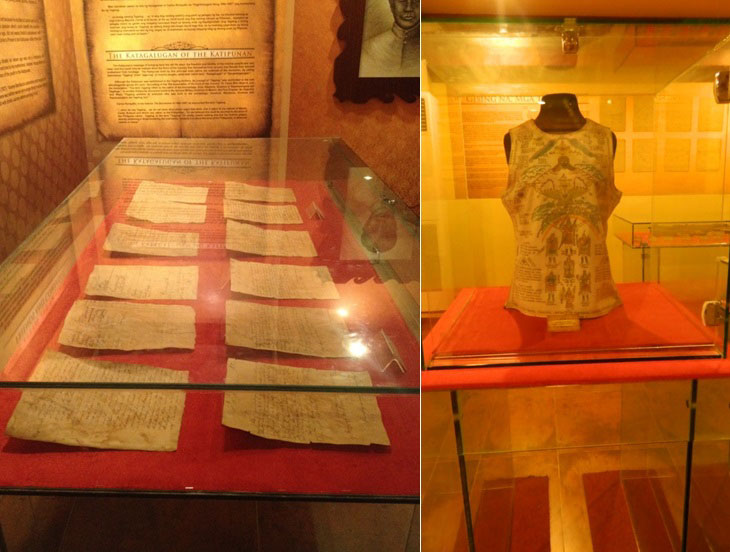
Reproduction of KKK documents (left photo) and an anting-anting vest (right photo)
Museo ng Katipunan exhibits the blades of the Katipuneros which they used during the 1896 revolution. You can also see some of the replicated Katipunan supreme council members’ medals, anting-anting, and Katipunan documents inside the museum.
6. Paintings
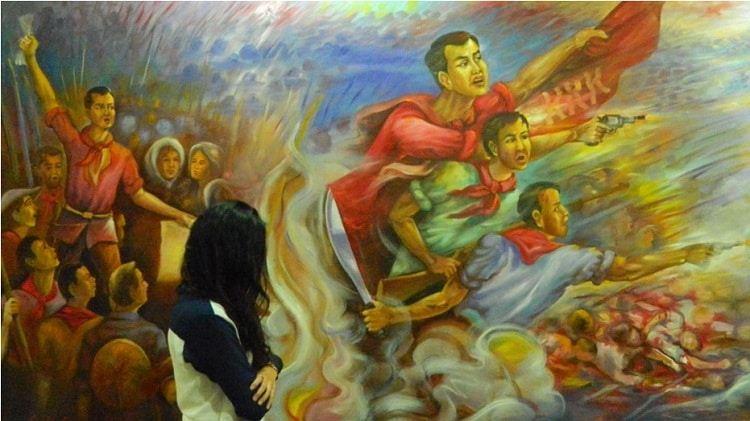
The Life of Andres Bonifacio painting by Pancho Piano
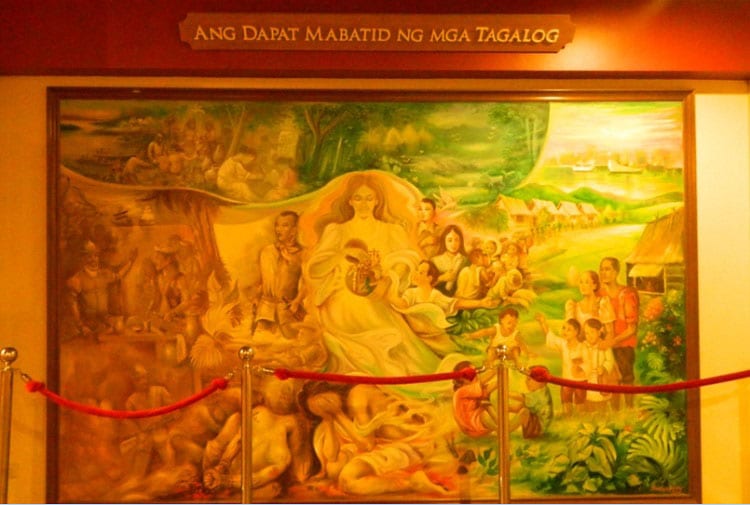
Ang Dapat Mabatid ng mga Tagalog painting by Pancho Piano
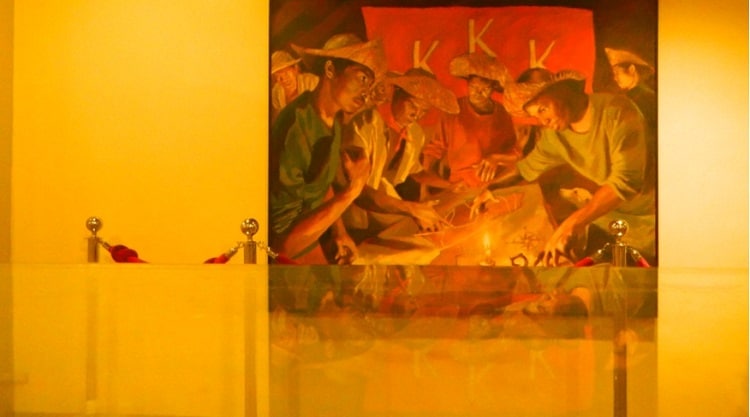
Katipunan painting by Filipino artist Juanito Torres
Paintings about the KKK give colors to its walls. These artworks provide you visual representation of the revolution and the life of the Filipinos under the Spanish regime.
7. Isabelo Tampinco’s sculptural work
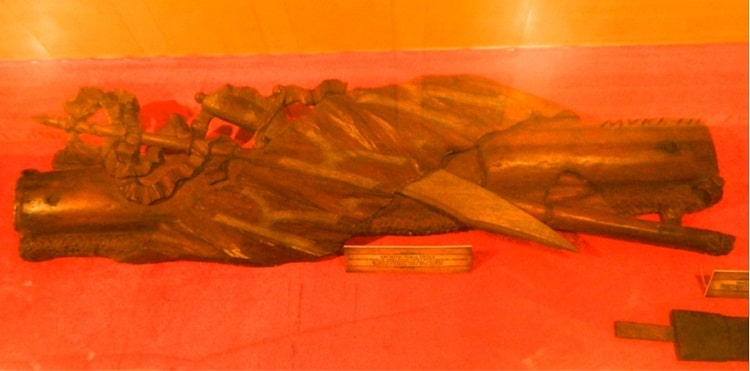
Sculptural work by Isabelo Tampinco crafted during the early 20th century
Also, exhibited in the museum is the original Katipunan sculptural work of the 19th century famous Filipino sculptor Isabelo Tampinco.
8. Interactive Touchscreen Terminals
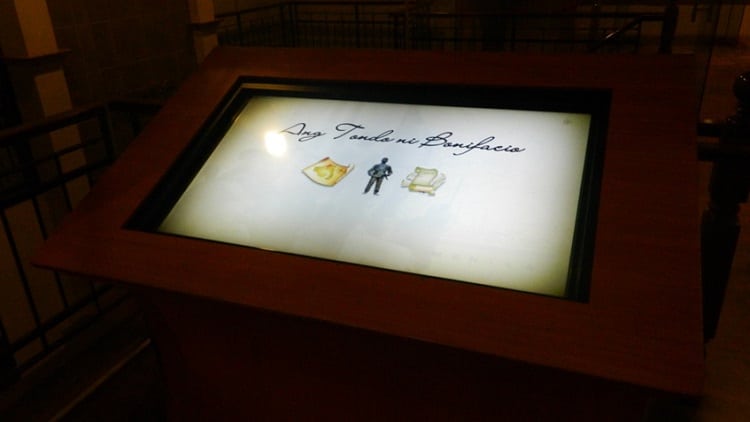
Ang Tondo ni Bonifacio Interactive Touchscreen Terminal
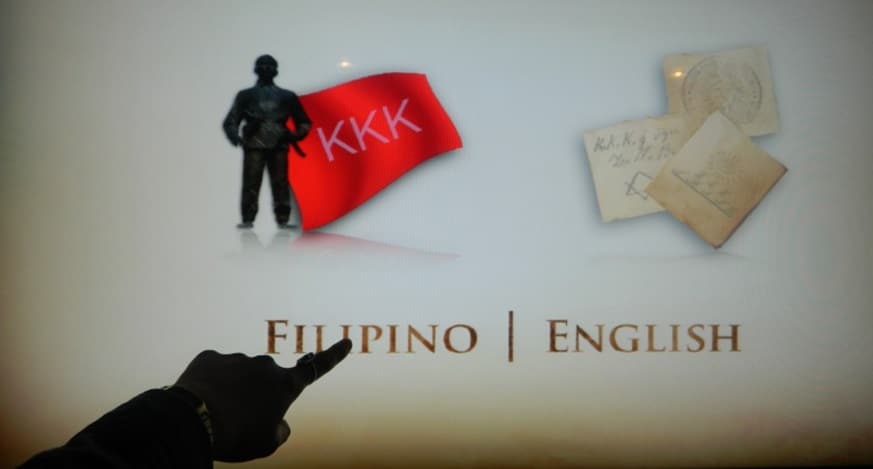
Mga Sagisag ng Katipunan Interactive Touchscreen Terminal
Museo ng Katipunan is not your typical history museum. It combines traditional and modern exhibits and utilizes modern technology in promoting history to the people.
Included in its modern features are the interactive touchscreen terminals. One of the touchscreen televisions details the map of Tondo where Andres Bonifacio was born and where the KKK was established. Another contains the flags and seals the KKK used.
9. Interactive Projector
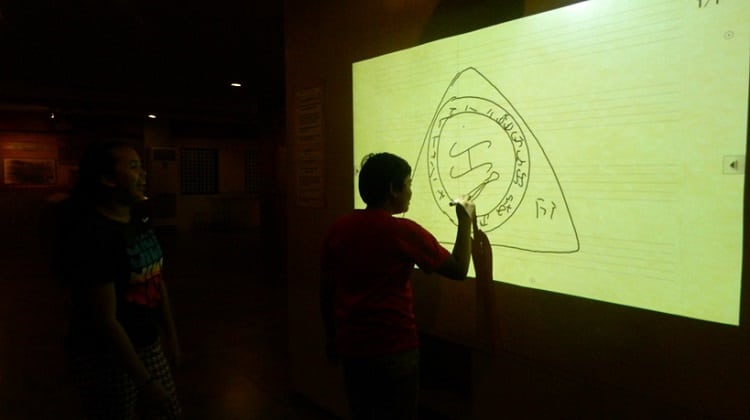
Interactive projector where visitors can draw their own Katipunan seals
Should you want to make your own Katipunan seal, they have the interactive projector where you can draw your version. Museum staff will print it for you as a remembrance too.
10. Interactive Map
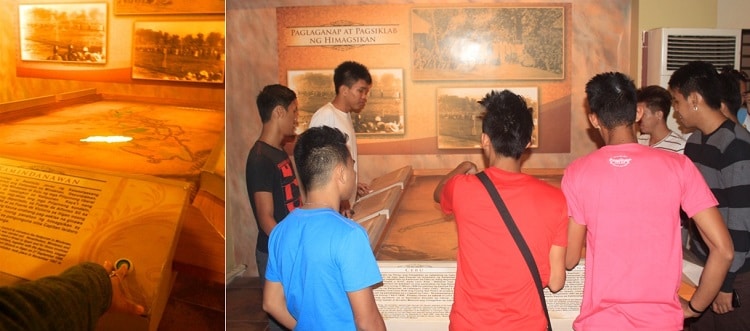
Interactive Map with 8 major areas where the revolution took place (right photo courtesy of Ryan Tan)
Looking at maps bores some of us but here you will find the Philippine map interesting to look at because it is interactive too. The interactive map shows how vast the influence of the Katipunan spread during the Spanish Era. It also highlights the places where the revolution took place.
11. Hologram
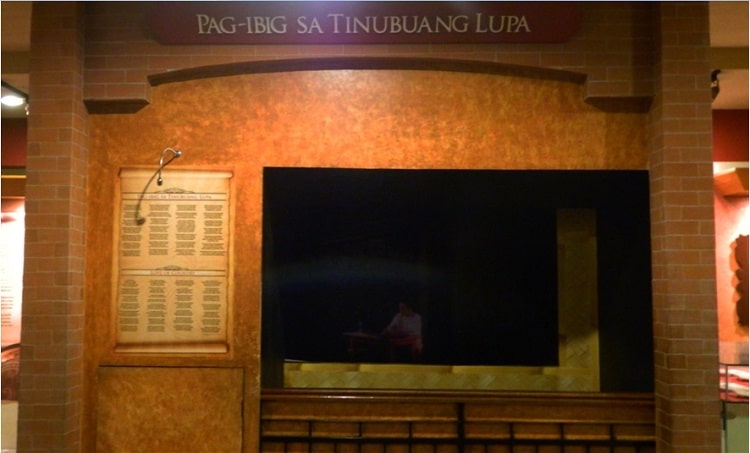
Hologram of Andres Bonifacio’s Pag-ibig sa Tinubuang Lupa
Instead of plainly reading wall text of the Supremo’s “Pag-ibig sa Tinubuang Lupa”, you may opt to watch a hologram of a man reading the poem for you.
12. Augmented Reality
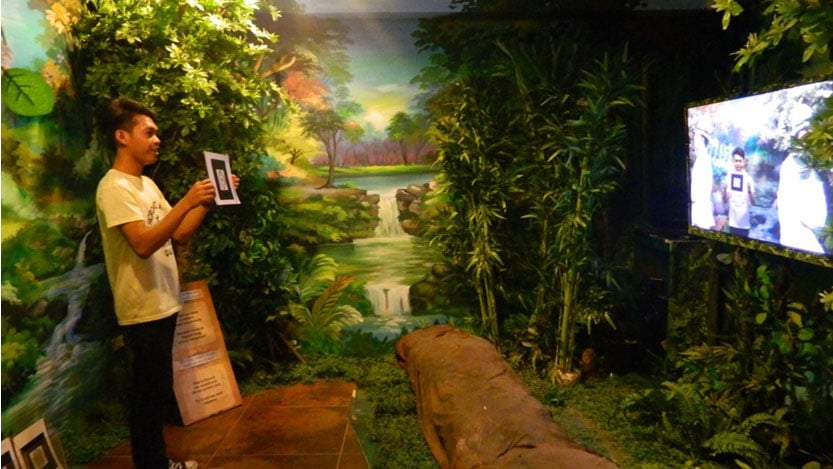
Museo ng Katipunan’s Augmented Reality
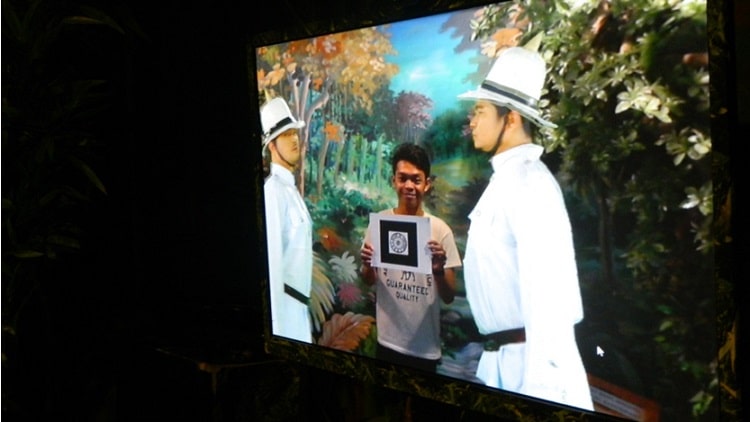
Augmented reality is becoming a trend in museums and galleries today. In Museo ng Katipunan, you will be amazed of its augmented reality equipped with visual and sound effects to give you a feel of the revolution.
13. E-learning Facility
It also has an e-learning facility which you can freely use. The e-learning modules on the history of Pinaglabanan contain lessons, quizzes, and fun activities to make learning informative and at the same time enjoyable.
14. Free History Tour
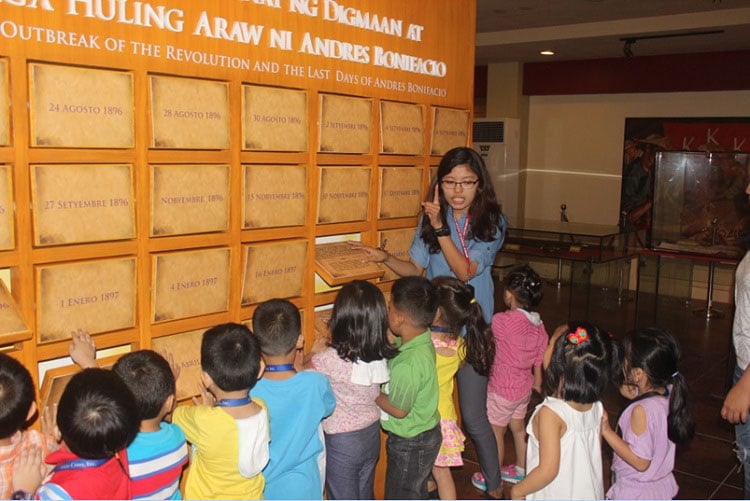
Shrine Guide Shiela Marie Miral tour guiding preschoolers
Above all, Museo ng Katipunan has knowledgeable and accommodating staff who will tour you around for free.
15. Free Entrance
Since the main purpose of the museum is to promote the history of Katipunan to all, the public can visit the place with no entrance fee required. Yes, you read it right! There is no entrance fee.
So what are you waiting for? Visit now!
Museo ng Katipunan-Pinaglabanan Memorial Shrine is under the management of the National Historical Commission of the Philippines. It is located at 29 Pinaglabanan St., Brgy. Corazon De Jesus, San Juan City, Metro Manila. It is open from Tuesday to Sunday, 8:00 am-4:00pm. For inquiries call (02) 576-4336 or send a message to pinaglabananmemorialshrine@nhcp.gov.ph. You may also follow the museum on Facebook, Instagram, and Twitter.
Photos by Ayesha Sayseng unless otherwise stated.
About Ayesha Sayseng
Ayesha is a cultural worker and a travel enthusiast.
Leave a Reply